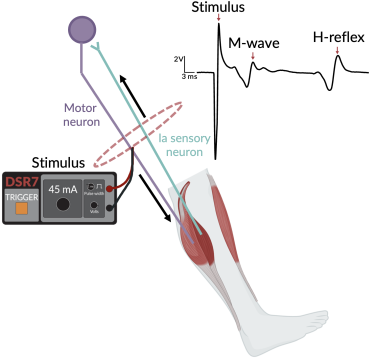Spinal Reflex Excitability
Project Overview
This study investigates changes in spinal excitability using peripheral nerve stimulation. We use the Hoffman reflex (H-reflex) to assess segmental changes following a neuroplasticity-priming intervention.

Assessing Spinal Reflex Excitability
Spinal excitability reflects the responsiveness of spinal circuits to afferent input, primarily modulated by descending and segmental pathways. The H-reflex indicates alterations in motoneuron excitability and presynaptic inhibition at the spinal level. By evaluating H-reflex modulation before and after the intervention, we can determine whether targeted neuromodulation strategies can influence spinal reflex pathways.
Significance
Spasticity, a common consequence of spinal cord injury (SCI), is characterized by exaggerated spinal reflexes and increased muscle tone due to disrupted inhibitory control. Mitigating spastic hyperreflexia has important functional implications for regaining voluntary motor control. Understanding these mechanisms is critical for developing targeted rehabilitation approaches that optimize motor function and quality of life for individuals with SCI.

